Best of: Photo editor looks back on photojournalism
As I end my first year as photo editor for The Panther, I look back at a year’s worth of assignments — some good, some bad. Photos by SAM ANDRUS and DANIEL PEARSON, Photo Editor and Staff Photographer
Photojournalism throughout the pandemic has been full of what I can only describe as insanity, and our newspaper has covered a decent amount of it. Figuring out how to document these stories in a time when photographers aren’t allowed to get anywhere near their subjects — much less go to any kind of in-person event — has been challenging and is something no previous photo editor at The Panther has had to experience.
A majority of the stories we covered this year only required photo illustrations, Zoom screenshots or abstracts found online. However, there were still some things we could use our cameras for. I’ve had the privilege of working with many talented photographers this semester who’ve done their best to capture art amid this year’s chaos, but this “best of” special issue will highlight my personal work over the last year.
Think of it not as some narcissistic form of validation written to fill the hole left by the Society of Professional Journalists’ “Breaking News Photography” award going to our editor-in-chief (EIC) over myself, but more of a trip down memory lane, nostalgically reflecting on an academic year scarred by political controversy and a raging global pandemic.
This photo illustration was actually the first picture for an editorial I took. That’s my friend Tay Weiss, sophomore film production major, in my Chapman hoodie because she didn’t own a single piece of Chapman merch. It was inspired by Bong Joon Ho’s “Parasite” and was taken for an editorial about the university’s response to former professor John Eastman’s controversial Kamala Harris Newsweek opinion.
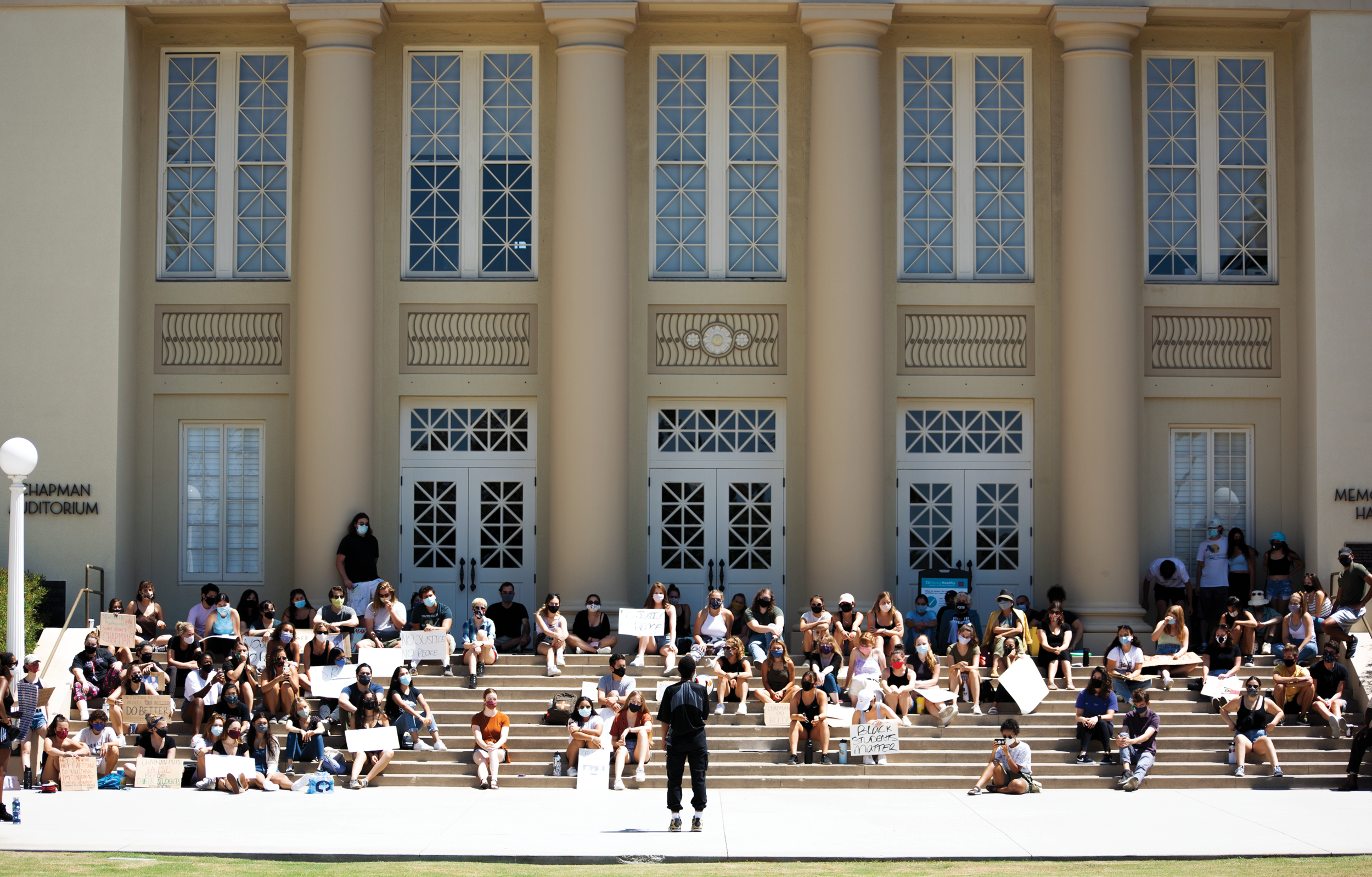
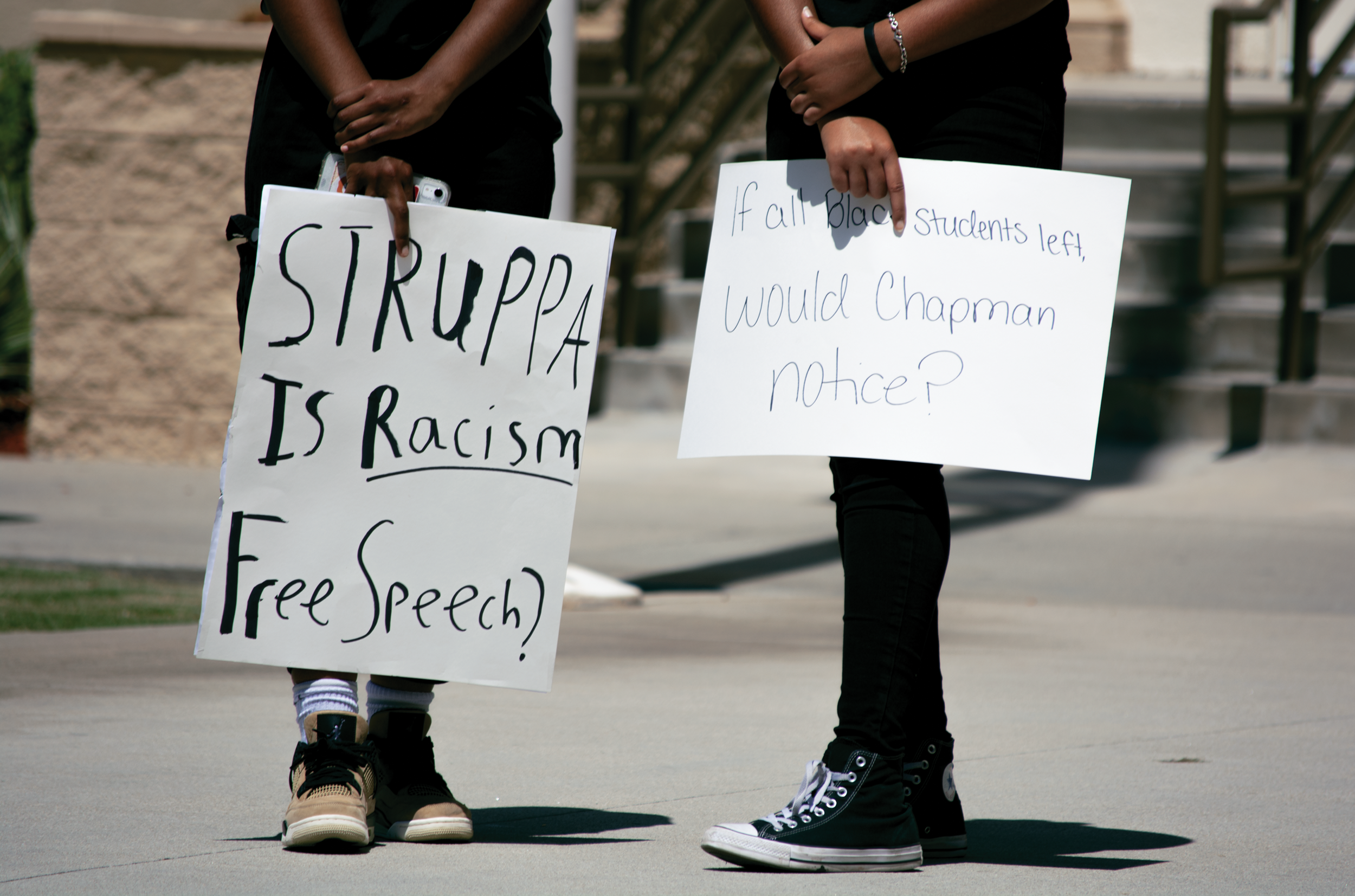
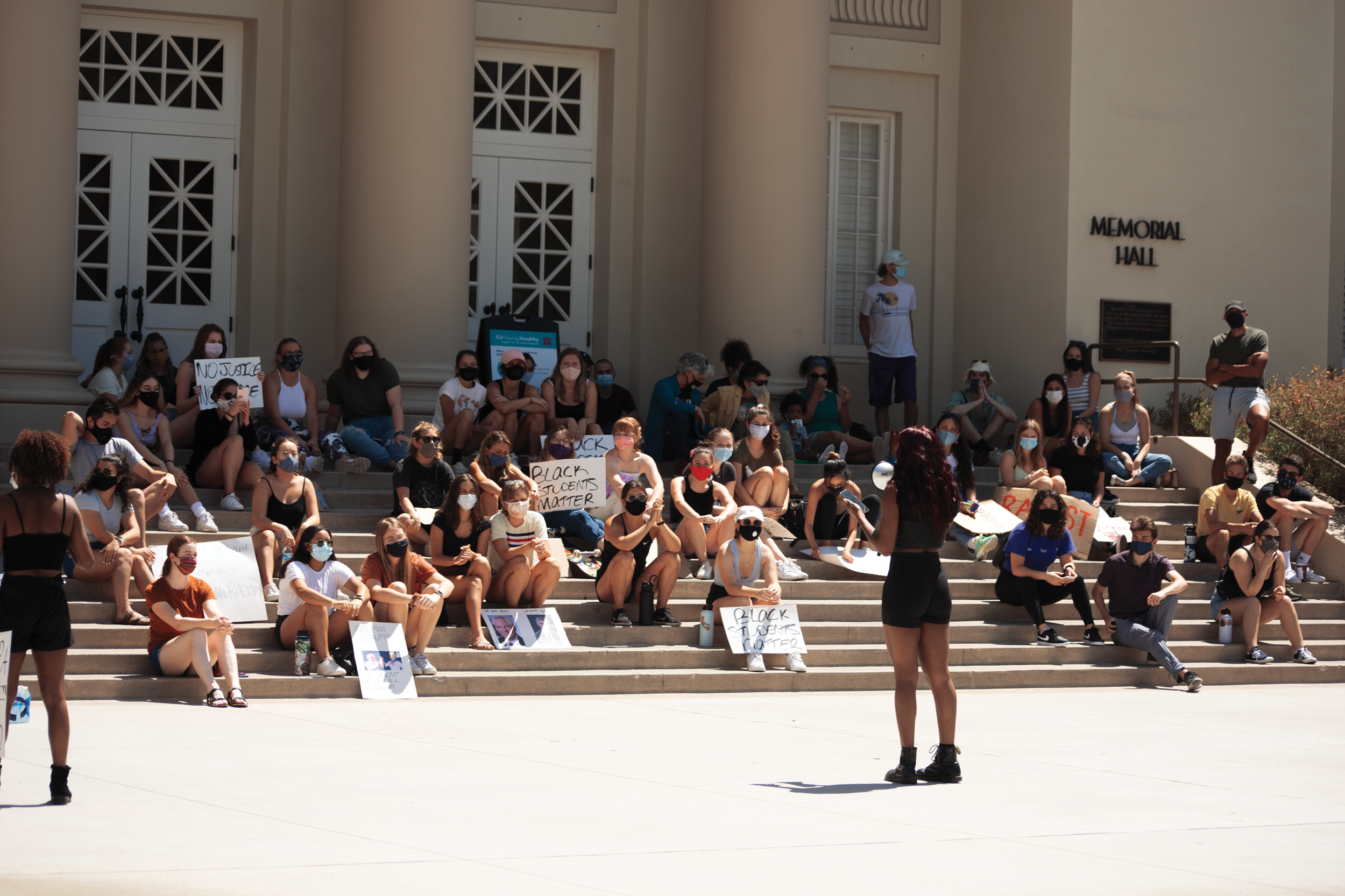
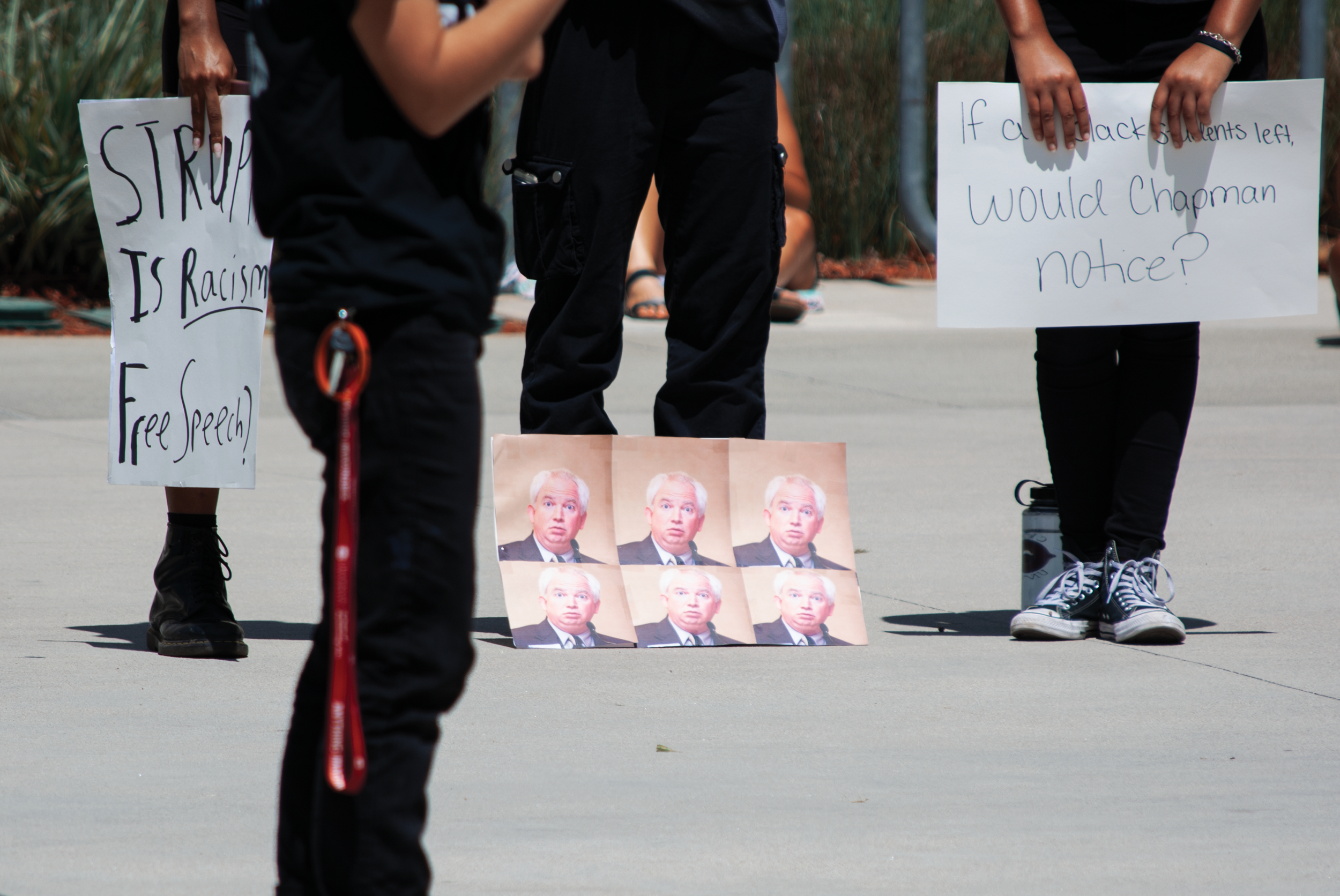
These photos were taken at the Black Student Union (BSU) protest in August, which was organized to demand a greater response from Chapman University on Eastman’s xenophobic piece questioning Harris’ citizenship. It was also the first time I met Jasmin Sani, The Panther’s editor-in-chief, and Luca Evans, our staff’s managing editor, who was substantially shorter than I expected.
I remember wearing a red mask I had bought from Target, worried that people at the protest would think I was a Republican snapping photos to secretly report them. Luckily, I ran into my friend Haleluya Wondwosen, who was on BSU’s executive board as treasurer and let me take a few pictures. I listened to speeches before going back to edit the photos and was very glad that Eastman’s behavior had provoked pushback from the student body, prompting so many to come out and demonstrate.
The photo of the sign with all the Eastman faces was always my favorite, but it was never published.
Arvida Book Company was one of the only locations for a photo assignment where I actually got to talk with people. As a photographer, something I’ve always valued is the joy of meeting new people, learning about them and then being able to portray them through an image. Arvida Book Company was further from Chapman’s campus than I expected. I had to get on the highway, and at the time, my car didn’t have a roof on it. That’s not a flex; my car was in fact supposed to have a roof.
I was planning on getting some shots of the outside and a couple through the door, then leaving. But when I got inside, I was greeted by the owner (pictured above). She showed me around the store and told me about all the cool things they were doing to work through the pandemic. By the end of my tour, I was rooting for her business to succeed and ended up purchasing a copy of “The Odyssey.”
At the beginning of the spring semester, I met a student named Billy Pruett, a sophomore creative writing major at Chapman. He’s a transfer student from the East Coast and didn’t know that many people other than my roommate. Pruett let me experiment with my first photo essay capturing him and his dorm life.
Transferring schools is difficult regardless, but during a pandemic, Pruett’s hall was stone-cold silent — the opposite of an inviting environment for first-year students. The picture above is his view of the parking garage from the stairs in Glass Hall. I included it because it’s insane how empty the Jim Miller Parking Structure was in comparison to any other year, indicative of the ghost town Pruett had just moved into.
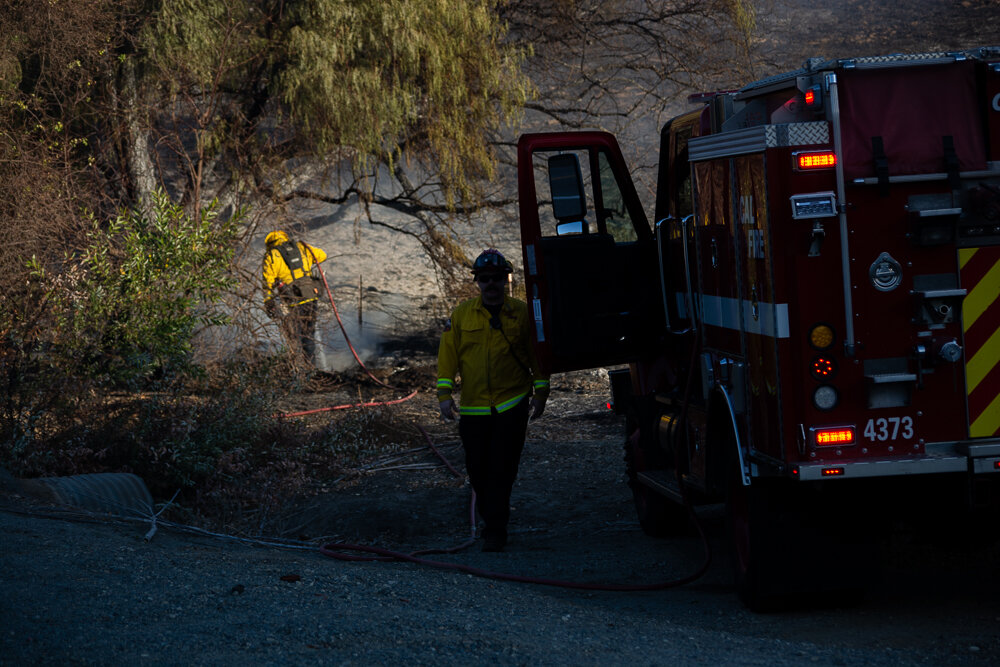
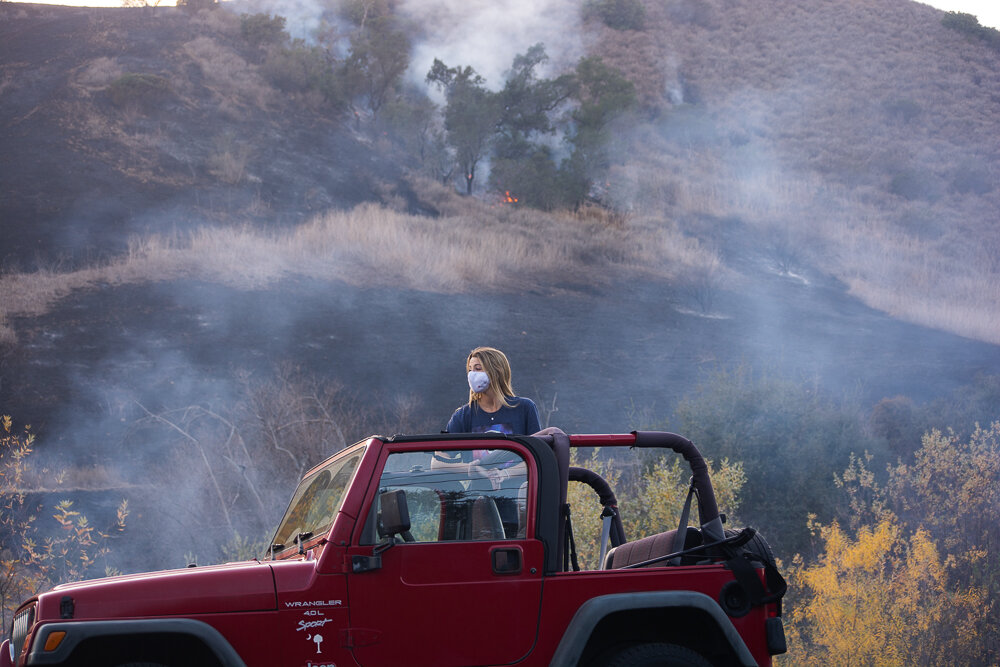
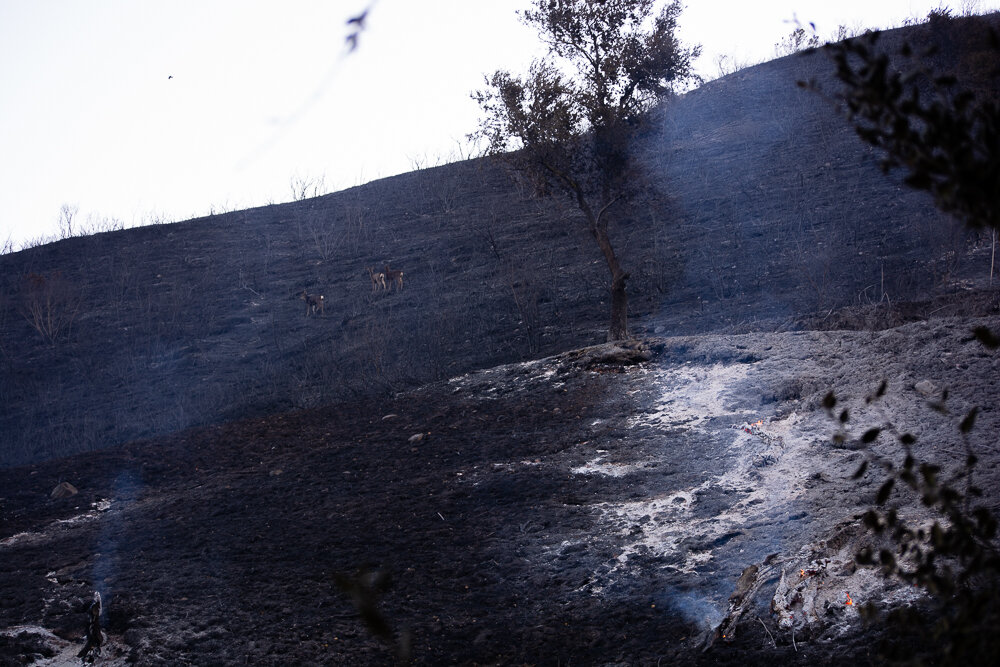
Early one morning in December, I woke up to three text messages. One was from my mom, telling me there was a fire near Chapman and asking if I was OK. The second was from Jasmin, asking me to drive to the fire and take pictures as close as I could get to it. The third was from my friend Morgan White, asking if I had turned in a test for our German class. I replied, “Yes, I’m safe,” to my mom, “Sure, I’ll leave rn,” to Jasmin and, “Hey, wanna go on a quick 20-minute adventure?” to Morgan.
It was not a quick 20-minute adventure, but a three-hour ordeal that saw Morgan, a sophomore screenwriting major, and I driving 40 minutes to Santiago Canyon in my convertible Jeep. It was still missing a top, so ash flooded through the open ceiling as we circled the same hillside over and over, looking for an entrance to get closer to the fire that wasn’t blocked off by police.
We met a man who turned out to be a freelance photojournalist with a national press pass. We spoke with him and he was happy to let us tailgate him. We followed him into the police barricade and drove into an active forest fire.
It was super hot. Both Morgan and I wore double masks so as to not breathe in the smoke, but it was thickly spreading everywhere. It got in our eyes, it got all over my car and for the rest of the day, we both smelled like a barbecue. The most interesting photos I took were of three deer that were walking on the hillside. I don’t know what happened to them; I hope they made it out OK, but I suspect they did not.
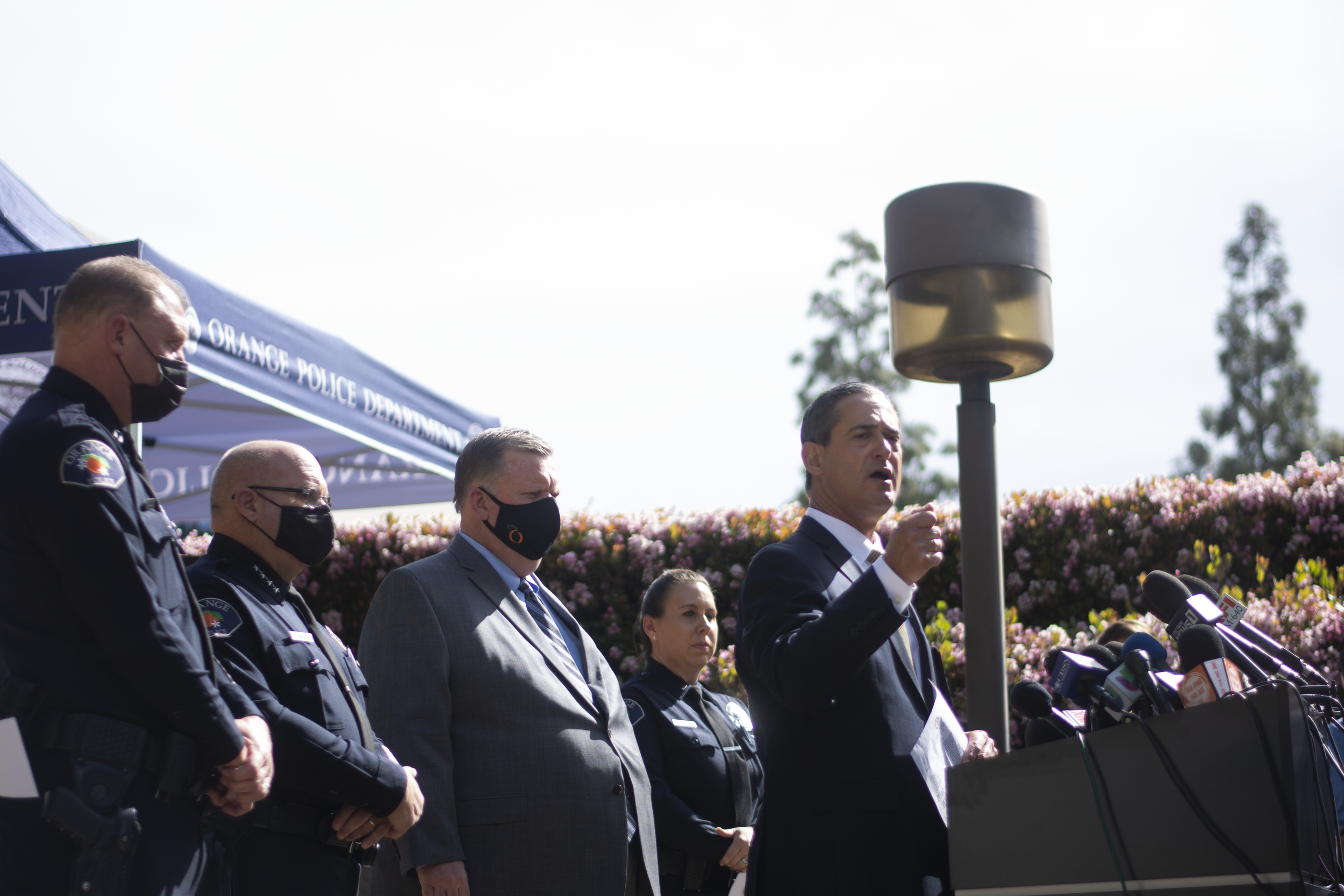
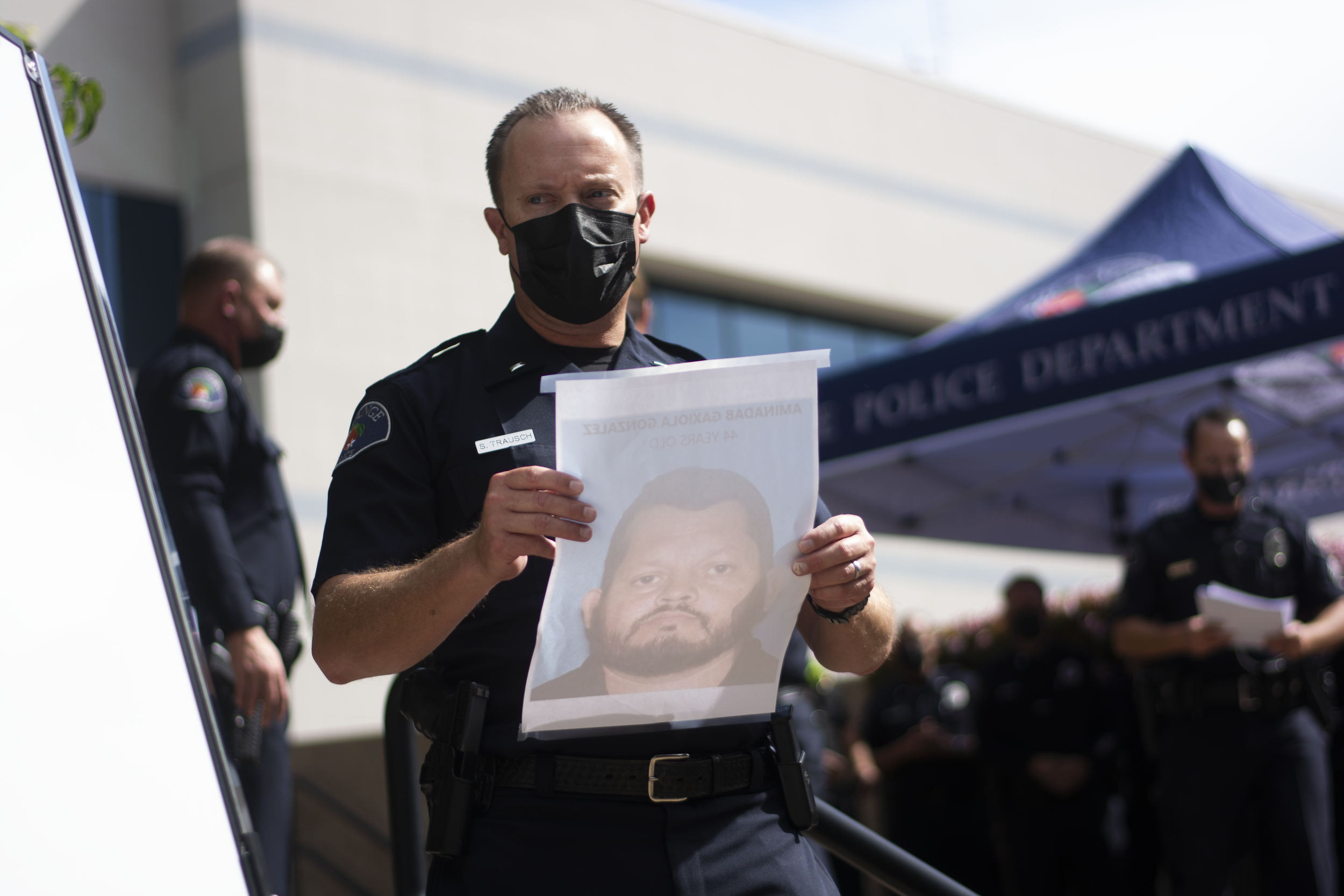
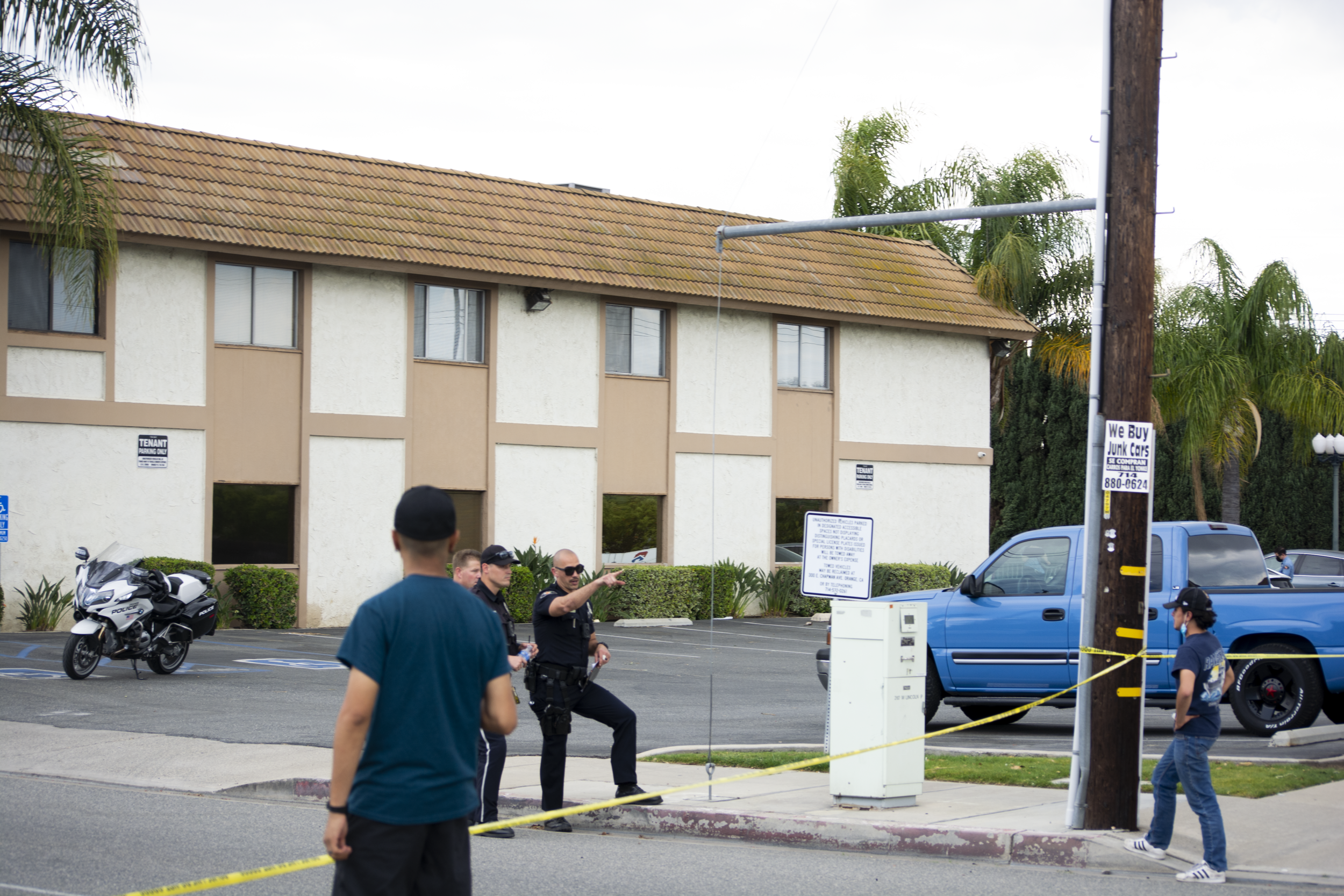
These photos were taken the day after the March 31 mass shooting right here in Orange.
I remember sitting near all sorts of news people with nice suits and microphones and camera crews assisting them, with brand names like CNN and NBC stitched onto their clothing. I just sat criss-cross applesauce on the ground in my shorts and t-shirt.
The speeches were depressing — four people had been murdered, a child among them. Immediately after the press conference, I went to the crime scene to gather more pictures. There was police tape everywhere and it was eerily quiet, except for one kid who ran past me as I was walking over to a couple of cops who were surveying the area.
I talked to the kid, who appeared to be around 19 years old, as he was leaving from another reporter’s interview. He told me he thought he knew someone who was involved in the crime and had come to see what was going on. He claimed the suspect was his uncle, though unrelated by blood, and asserted that this uncle may have been the man to perpetrate the shooting.
I had a picture of Aminadab Gaxiola Gonzalez from the press conference in my backpack. I held the image out to him, on which his eyes immediately fixated. He stared at it silently for a second before nodding his head; a single tear rolled down his cheek. He didn’t want to answer more questions after that and refused to provide his contact information, but he told me his last name was the same as the shooter’s. When I showed him the photo, it might’ve been the first time he realized how seriously life-changing the situation was.
I hated that I did that. Even though the kid would have found out anyway, I never want to see someone look at me that way ever again.
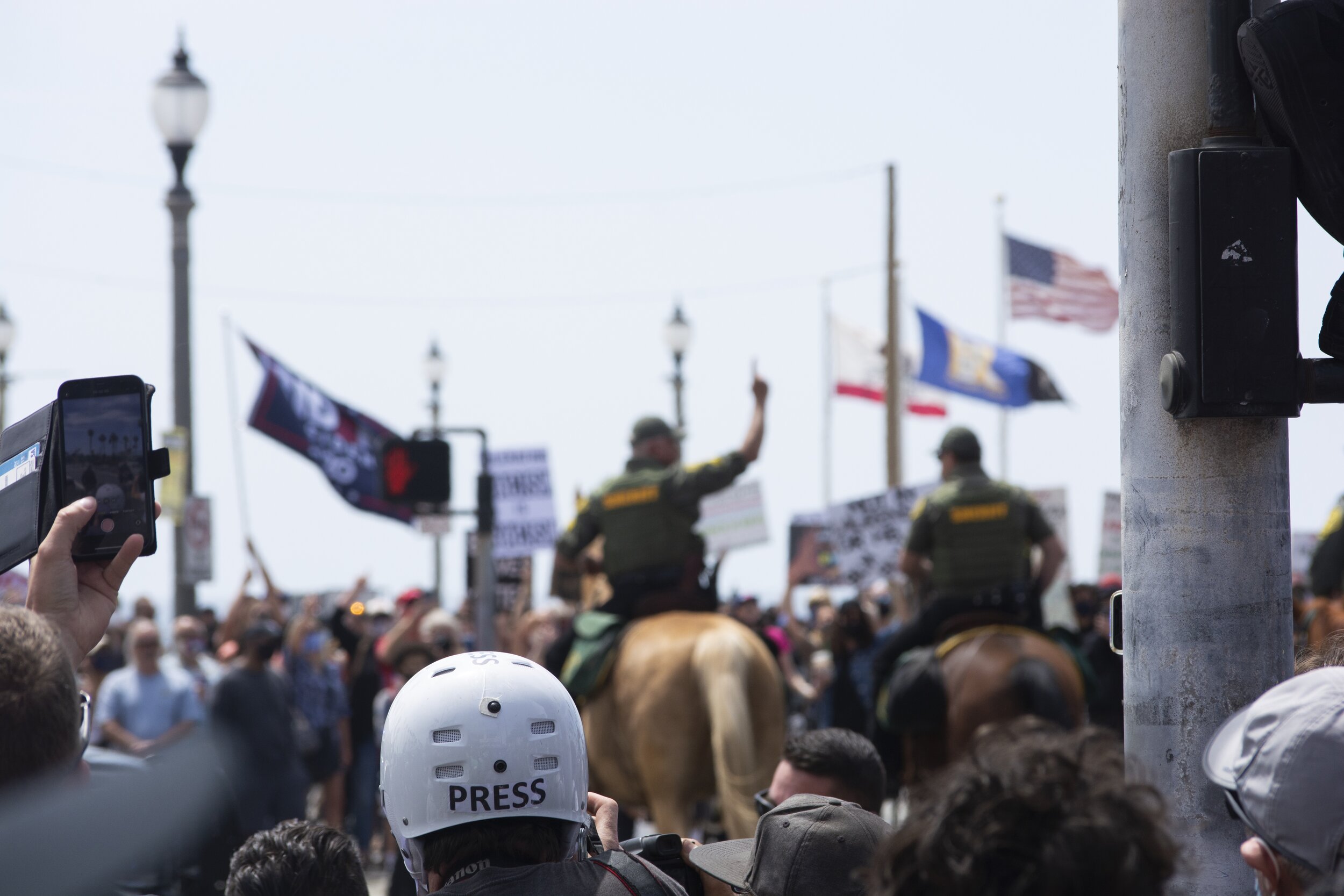
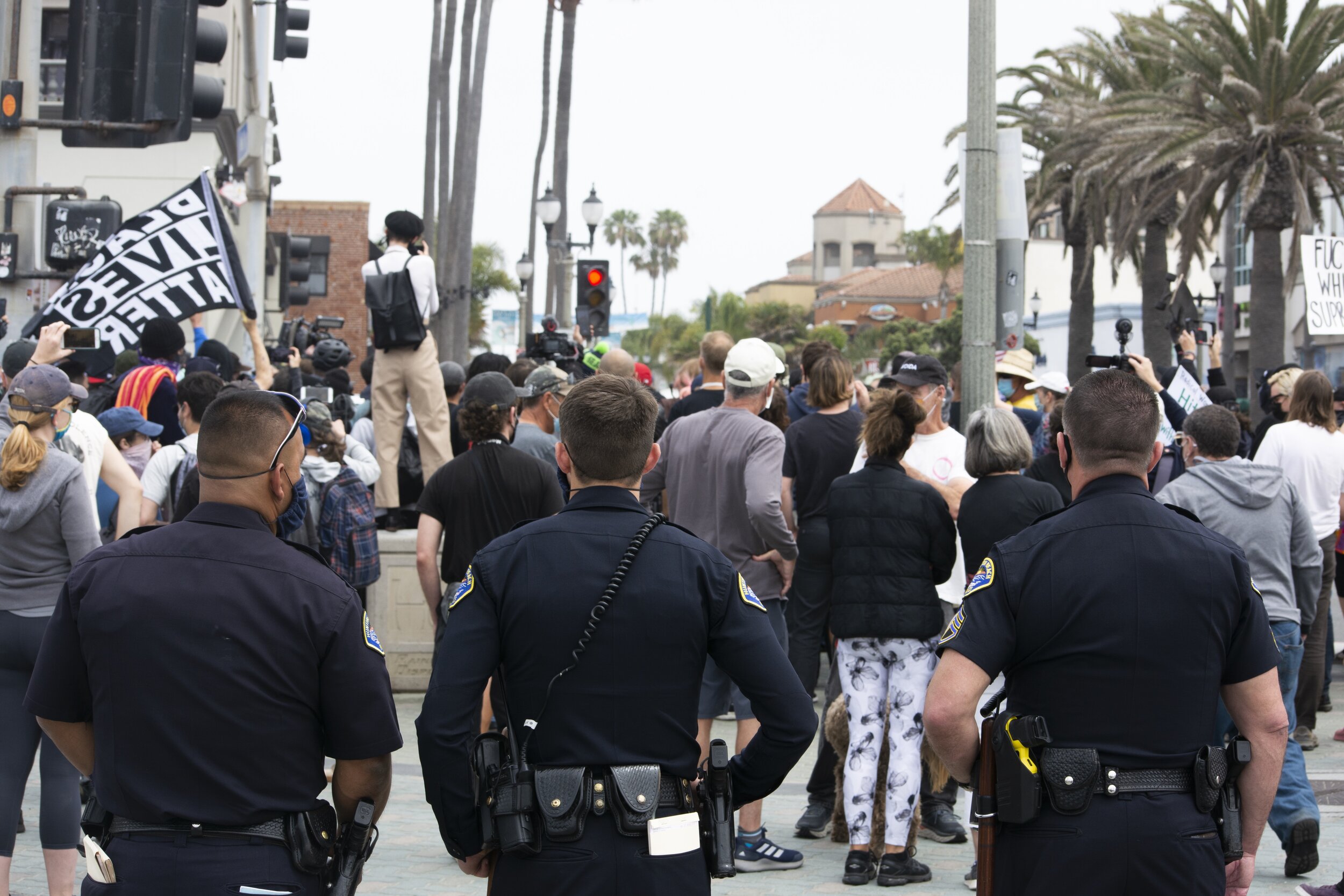
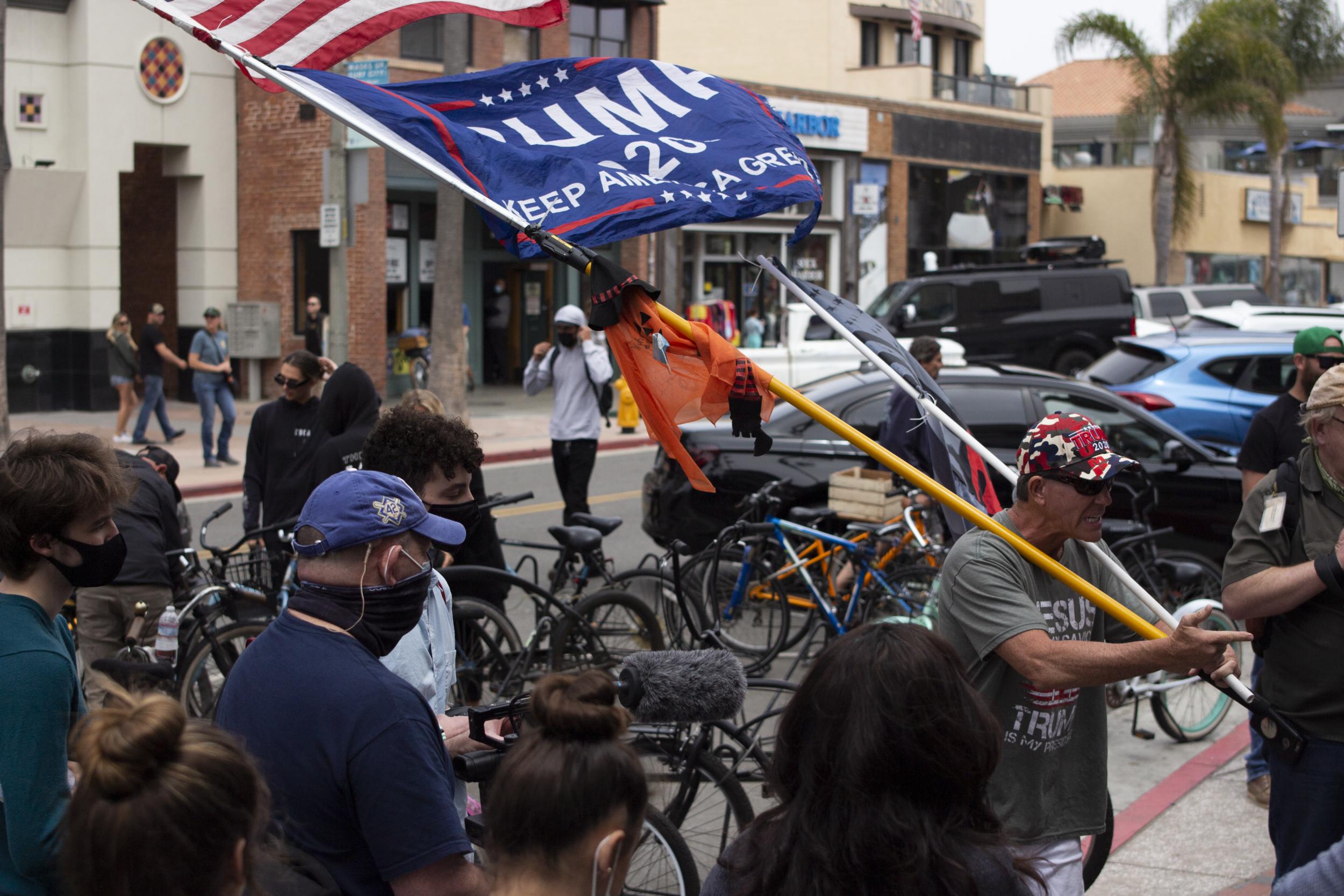
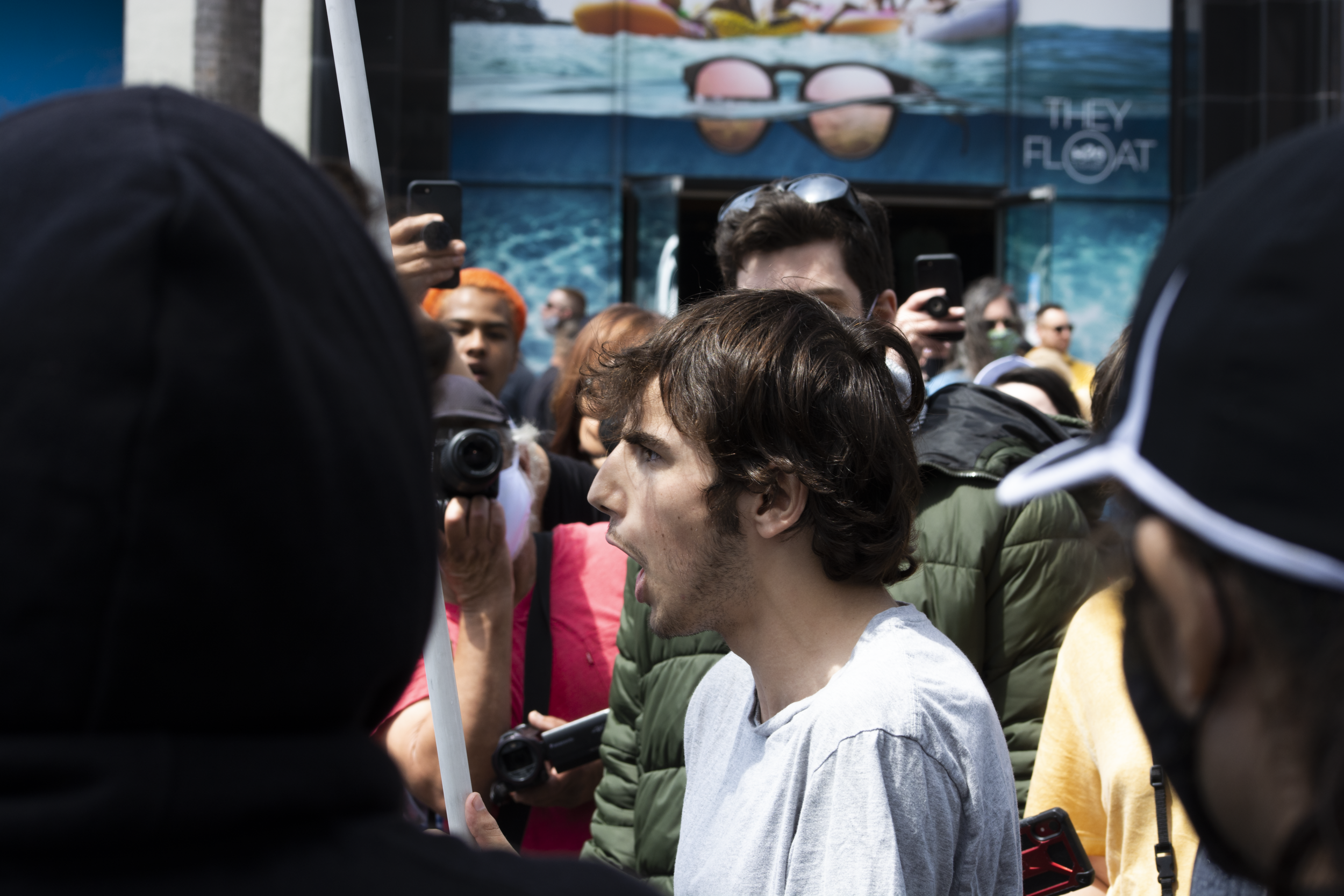
These photos were taken at the April 11 counterprotest held against the scheduled White Lives Matter rally in Huntington Beach. It was a crazy scene. I talked to a QAnon supporter about his beliefs, and I took a picture in front of police horses. There weren’t as many White Lives Matter or Trump supporters as I had anticipated would arrive, but there were a couple and they were pretty loud.
The experiences I’ve had this year, from attending an anti-White Lives Matter counterprotest to driving behind police barricades into an active fire, are some I couldn’t get from any other job. It hasn’t always been easy and lots of it wasn’t fun, but I wouldn’t trade this year or the people I’ve worked with at The Panther for anything.




